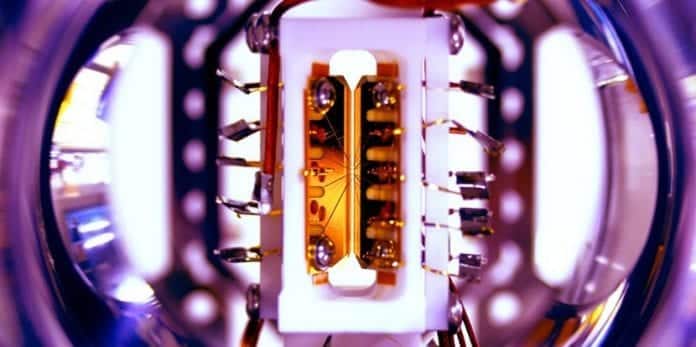First Reprogrammable Quantum Computer To Bring In New Age Of Technology
According to a new study, researchers at the Joint Quantum Institute (JQI) at the University of Maryland have created the first programmable and reprogrammable quantum computer. This new study is expected to help the scientists to run numerous complex simulations and can generate quick resolutions to complicated calculations in comparison to conventional computers.
The newly developed quantum computer is only made from five atoms, and is one of the significant steps leading towards developing new devices.
“We tried to make a quantum processor of five qubits with trapped ions that is reconfigurable, and by that I mean that you can literally program algorithms into it,” Shantanu Debnath, an optical engineer, a quantum physicist at University of Maryland and the lead author of the Nature paper, from the US University told WIRED.
Debnath calls it a fundamental building block en route for large scale devices.
The academics were able to implement the quantum algorithms using laser pulses, which can be turned on and off. “It’s really the flexibility that we are aiming towards and we have done,” he said.
Debnath explains: “We demonstrated this by implementing four different algorithms and we are running more right now. In trapped ions, or any other computing platform, this had not been done before”.
The device is made up of five pieces of quantum information – known as qubits. Traditionally bits can only ever be in the state of 0 or 1, but a qubit can be a supposition of both. Quantum computing holds the logic of “superpositions” which divides it from traditional computers. This means that atoms, for example, can swirl in two opposite directions at the same time.
That kind of superposition makes quantum computing fundamentally different from traditional computers. Classical computers represent data as 1’s and 0’s, binary digits known as “bits” and represented by flicking switch-like transistors either on or off. On the other hand, quantum computers, use qubits that are in superpositions, which means that they are simultaneously on and off. This enables a qubit to basically perform two calculations at the same time.
While many groups in the past have developed small quantum computing devices, most of these have only been hard-wired to solve a single problem, and any reprogramming requires complex physics. However, this new device is diverse and easily programmable.
The researchers were able to use algorithms to perform a mathematical calculation in a single step, which a conventional computer would take several steps to complete the same tasks.
“The team implements three quantum algorithms using their systems, demonstrating the power of their control techniques,” Andrew Daley, from the University of Strathclyde physics department, told WIRED. “It’s really nice to see this being done with trapped ions, and provides an exciting platform for future developments,” said the independent researcher.
Researchers are now working on the next step which is to shrink the system to make it more compressed. “The next step is to miniaturise the system; to come up with a compact version,” Debnath explains. “This means improving the ion trap, improving the way you deliver the lasers and all your controls into the system. Also, to scale it up and have more qubits in the processor.”
The research has been published in Nature.
Source: WIRED

